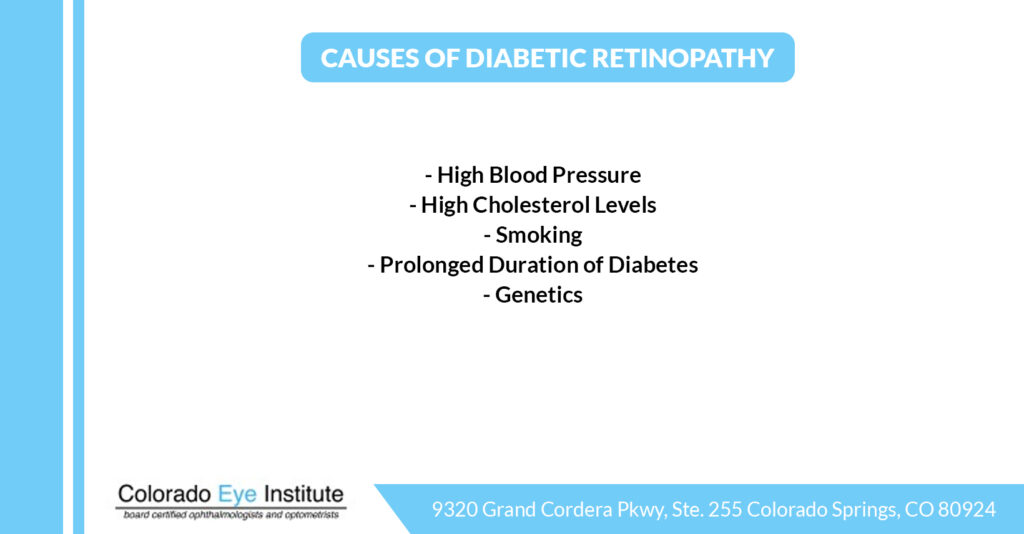Diabetic retinopathy is a progressive eye disease that develops as a complication of diabetes. When blood sugar levels remain consistently high over time, they can cause damage to the blood vessels in the retina, leading to diabetic retinopathy. The retina is crucial for vision as it senses light and sends signals to the brain, allowing us to see.
What is Diabetic Retinopathy?
Diabetic retinopathy is a complication of diabetes that affects the eyes, specifically the retina—the light-sensitive tissue at the back of the eye. The retina plays a crucial role in vision, as it converts light into signals that are sent to the brain, allowing us to see. When the blood vessels in the retina are damaged due to prolonged exposure to high blood sugar levels, it can lead to various vision problems and even blindness if not managed effectively.
Two Main Types of Diabetic Retinopathy
1. Non-Proliferative Diabetic Retinopathy (NPDR): In this early stage, small blood vessels in the retina leak fluid or blood, causing the retina to swell or form deposits called exudates. Vision may not be affected at this stage, but it is essential to monitor the condition closely as it can progress to a more severe form.
2. Proliferative Diabetic Retinopathy (PDR): In advanced stages, new blood vessels start to grow on the surface of the retina or into the vitreous gel, which can lead to severe vision problems, including blindness. These new blood vessels are fragile and prone to bleeding, which can cause vision loss.
Preventing diabetic retinopathy involves managing diabetes effectively to control blood sugar levels, blood pressure, and cholesterol. Diabetic retinopathy is a serious eye condition that may lead to potential vision loss or blindness if left untreated.
Symptoms of Diabetic Retinopathy
Diabetic retinopathy often progresses without noticeable symptoms in the early stages. However, as the condition advances, individuals may experience:
- Blurred or Fluctuating Vision
- Floaters or Spots in the Field of Vision
- Difficulty Seeing at Night
- Loss of Vision Either Suddenly or Gradually
It’s important to note that diabetic retinopathy can affect one or both eyes. It is advised to consult a retinal specialist in Colorado for expert guidance and care of retinal disorders.
Causes of Diabetic Retinopathy

The primary cause of diabetic retinopathy is uncontrolled diabetes, particularly over an extended period. When blood sugar levels are consistently high, they can damage the delicate blood vessels in the retina, leading to leakage, swelling, and the formation of abnormal blood vessels. Other factors that may increase the risk of developing diabetic retinopathy include:
- High Blood Pressure
- High Cholesterol Levels
- Smoking
- Prolonged Duration of Diabetes
- Genetics
What are the Treatment Options?
Fortunately, several treatment options are available to manage diabetic retinopathy and prevent further vision loss:
Laser Treatment (Photocoagulation): This procedure uses a laser to seal leaking blood vessels or shrink abnormal blood vessels in the retina. It helps reduce swelling and prevent further damage to the retina.
Injectable Medications (Anti-VEGF Drugs): Anti-VEGF drugs are injected into the eye to inhibit the growth of abnormal blood vessels and reduce leakage and swelling in the retina. These medications can help improve vision and prevent further deterioration.
Vitrectomy Surgery: In advanced cases of diabetic retinopathy where there is significant bleeding into the vitreous gel of the eye or the formation of scar tissue, vitrectomy surgery may be necessary. During this procedure, the vitreous gel is removed, and any blood or scar tissue is extracted to restore vision.
It’s essential to consult with an ophthalmologist to determine the most suitable treatment approach based on the individual’s specific condition and needs. While not all cases of diabetic retinopathy can be prevented, there are tips individuals with diabetes can take to lower their risk and protect their vision. Apart from the professional treatments outlined in the blog, it’s recommended that individuals also consider some simple self-care tips. We suggest referring to our previous blog on preventing eye damage from diabetes for valuable insights into these fundamental steps to reduce the likelihood of diabetic retinopathy.
Frequently Asked Questions
1. Can you stop diabetic retinopathy?
While it may not always be possible to completely stop the progression of diabetic retinopathy, early detection and appropriate treatment can significantly slow its progression and preserve vision.
2. Can diabetes cause retinal damage?
Yes, diabetes can cause retinal damage by affecting the blood vessels in the retina, leading to diabetic retinopathy.
3. What are two symptoms of diabetic retinopathy?
Two common symptoms of diabetic retinopathy include blurred or fluctuating vision and the presence of floaters or spots in the vision.
